Water Hammer Phenomenon in Coronary Arteries: Scientific Basis for Diagnostic and Predictive Modeling with Acoustic Action Mapping
- PMID: 40075800
- PMCID: PMC11899655
- DOI: 10.3390/diagnostics15050553
Water Hammer Phenomenon in Coronary Arteries: Scientific Basis for Diagnostic and Predictive Modeling with Acoustic Action Mapping
Abstract
Background: In the study of coronary artery disease, the mechanisms underlying atherosclerosis initiation and progression or regression remain incompletely understood. Our research conceptualized the cardiovascular system as an integrated network of pumps and pipes, advocating for a paradigm shift from static imaging of coronary stenosis to dynamic assessments of coronary flow. Further review of fluid mechanics highlighted the water hammer phenomenon as a compelling analog for processes in coronary arteries. Methods: In this review, the analytical methodology employed a comprehensive, multifaceted approach that incorporated a review of fluid mechanics principles, in vitro acoustic experimentation, frame-by-frame visual angiographic assessments of in vivo coronary flow, and an artificial intelligence (AI) protocol designed to analyze the water hammer phenomenon within an acoustic framework. In the analysis of coronary flow, the angiograms were selected from patients with unstable angina if they had previously undergone one or more coronary angiograms, allowing for a longitudinal comparison of dynamic flow and phenomena. Results: The acoustic investigations pinpointed pockets of contrast concentrations, which might correspond to compression and rarefaction zones. Compression antinodes were correlated to severe stenosis, due to rapid shifts from low-pressure diastolic flow to high-pressure systolic surges, resulting in intimal injury. Rarefaction antinodes were correlated with milder lesions, due to de-escalating transitions from high systolic pressure to lower diastolic pressure. The areas of nodes remained without lesions. Based on the locations of antinodes and nodes, a coronary acoustic action map was constructed, enabling the identification of existing lesions, forecasting the progression of current lesions, and predicting the development of future lesions. Conclusions: The results suggested that intimal injury was likely induced by acoustic retrograde pressure waves from the water hammer phenomenon and developed new lesions at specifically exact locations.
Keywords: acoustics; antinode; compression zone; coronary acoustic action map; coronary lesion; fluid mechanics; nodes; pressure wave reflection; rarefaction zone; water hammer.
Conflict of interest statement
The authors declare no conflicts of interest.
Figures


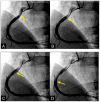
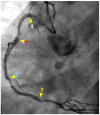
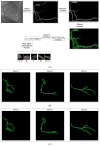

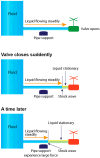
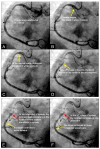









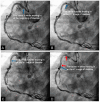





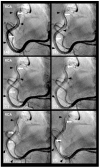
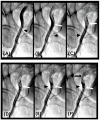





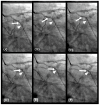
References
-
- Nguyen T., Ngo K., Vu T.L., Nguyen H.Q., Pham D.H., Kodenchery M., Zuin M., Rigatelli G., Nanjundappa A., Gibson M. Introducing a Novel Innovative Technique for the Recording and Interpretation of Dynamic Coronary Angiography. Diagnostics. 2024;14:1282. doi: 10.3390/diagnostics14121282. - DOI - PMC - PubMed
-
- Nguyen T., Nguyen H.D., Dinh H.V.K., Dinh T.H.T., Ngo K., Truong H.H., Nguyen H.Q., Loc V.T., Le T., Vo N., et al. Preliminary Results in the Investigation of In Vivo Iliac and Coronary Flow Collision, Vortex Formation, and Disorganized Flow Degeneration: Insights from Invasive Cardiology Based on Fluid Mechanics Principles and Practices. Fluids. 2024;9:222. doi: 10.3390/fluids9100222. - DOI
-
- Ghidaoui M.S., Zhao M., McInnis D.A., Axworthy D.H. A Review of Water Hammer Theory and Practice. Appl. Mech. Rev. 2005;58:49–76. doi: 10.1115/1.1828050. - DOI
Publication types
LinkOut - more resources
Full Text Sources

